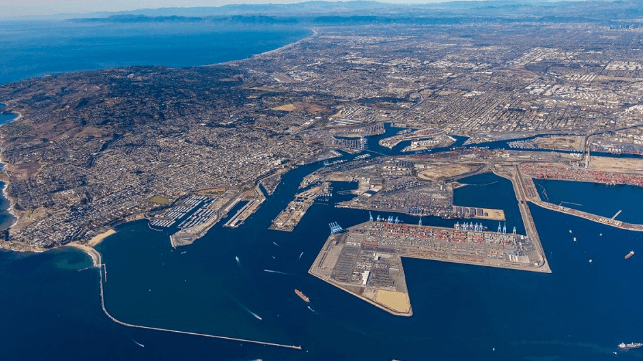NRF Forecasts More Supply Chain Congestion Ahead in 2022

The supply chain disruption in major U.S. ports is expected to continue despite a projected drop in export production in Asia, where factories are closing this month to mark the Lunar New Year, according to the National Retail Federation (NRF).
The NRF and Hackett Associates' monthly Global Port Tracker report shows that imports in America's congested container ports are expected to grow modestly during the first half of the year. Although the projected drop in export production in Asia would have created room for U.S. ports to clear the existing backlog, this cannot happen quickly enough as long as terminals continue to face a lack of space, which results from an inability to efficiently transfer cargo out of the terminals to its final destination.
A shortage of equipment, worker availability and storage space at distribution centers and warehouses across the country also remains problematic, as does the export of empty containers back to Asia.
“The slowdown in cargo growth will be welcome as the supply chain continues to try to adapt to these elevated volumes. Unfortunately, many experts expect ongoing disruptions throughout 2022 for a variety of reasons,” said Jonathan Gold, NRF Vice President for Supply Chain and Customs Policy.
He added that although the U.S is not going to witness more dramatic growth in imports - like it did this time last year - the fact that volumes aren’t falling is a clear indication of continued consumer demand.
“Last year set a new bar for imports, and the numbers remain high as consumers continue to spend, despite COVID-19 and inflation,” he said.
Congestion continues in most U.S ports. The port of Los Angeles alone currently has about 40 ships waiting to dock.
U.S. ports covered by Global Port Tracker are expected to handle 13 million TEU during the first half of this year, up 1.5 percent from the 12.8 million TEU handled during the same period last year. By contrast, the first half of 2021 saw a record 35.7 percent increase over the unusually slow first six months of 2020, when many Asian factories and U.S. stores were shut down because of the pandemic.
For 2021 overall, total imports stood at 25.8 million TEU, a 17.4 percent increase over 2020’s record high of 22 million TEU.
Although U.S. ports have not yet reported January numbers, the Global Port Tracker projects the month at 2.15 million TEU, up 4.4 percent year-over-year. February is forecast at 2.04 million TEU, up 8.7 percent and March at 2.12 million TEU, down 6.7 percent.
